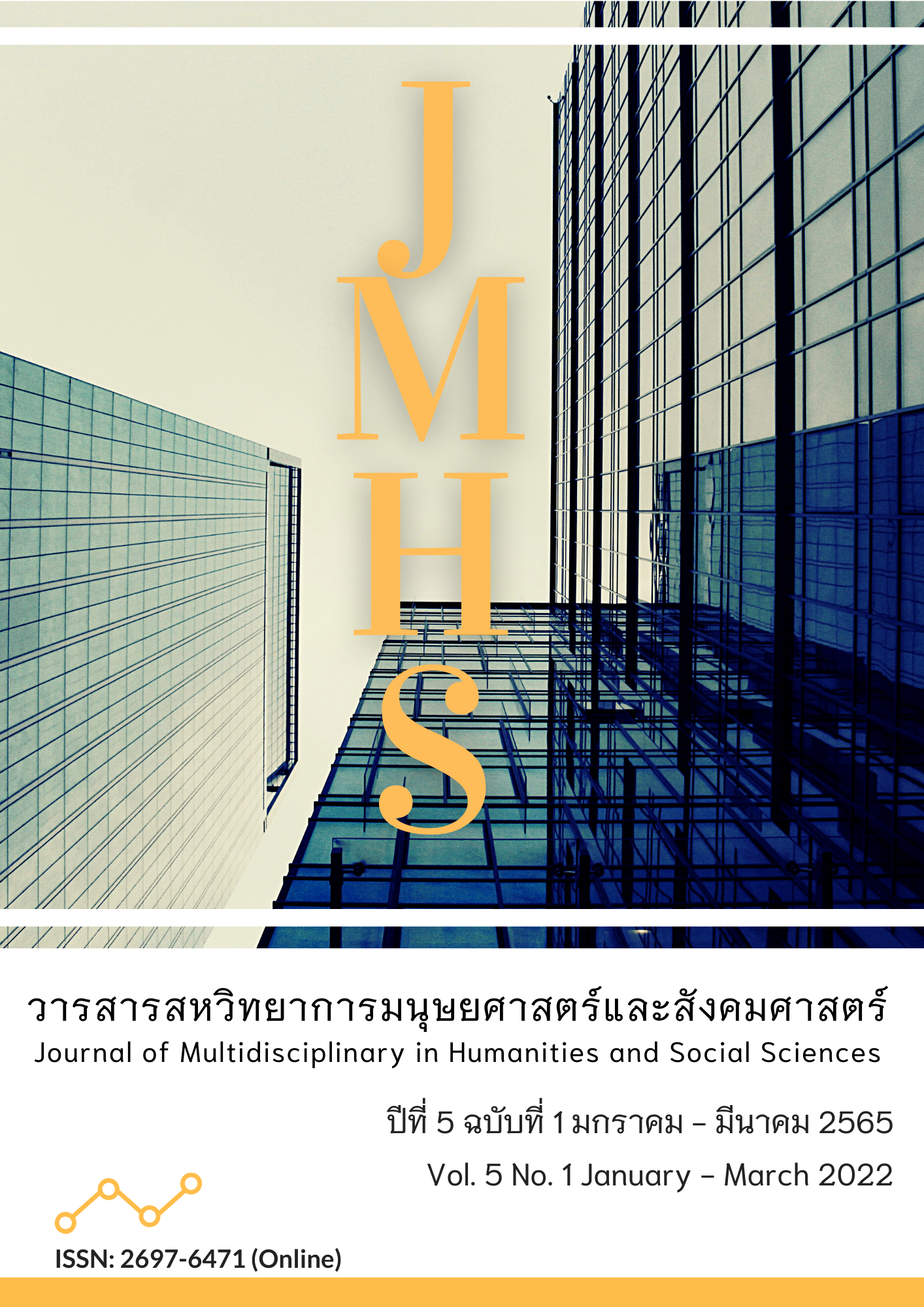A Study of Vipassana Meditation Practice in Pubba Sutta
Main Article Content
Abstract
The research paper’s objectives were 1) to study the contents and teachings in Pubbasutta and 2) to study Vipassana practice in Pubbasutta from studying Vipassana practice in Pubbasutta. It showed that an insight meditator initially experienced Vedana, either a pleasurable or unpleasurable feeling, while practicing, should be aware of the rise and fall of feelings, knowing their advantages and disadvantages, and the way out of such feeling attachment through the arising way of Vedana, according to Paiccasamuppada, the second insight knowledge called Paccayaparigahañana. Having realized the three common manners in both their arising and ceasing ways, he will pass through second insight knowledge, interring into third knowledge, Sammasanañana, having deep insight into Tilakkhana. In this state, he subdues lust, quits and abandons from Vedana clinging through complete realizing the ceasing way. This knowledge arises from experience of cause and ceasing away of feeling cling. He, with great effort, awareness, and mindfulness, observes any occurring pleasure and unpleasure at the present moment, noting that all of these feelings are ever-changing, unsatisfactory, and non-self, the feeling attachment causes the endless birth and death, and heading to release the feeling. Having realized the useless of feelings, the meditator’s mind goes to Nirodhavara, returning feelings and clinging of feelings. Having sacrificed all feeling attachment, he soon becomes bored and unsatisfactory to be bound, not clinging to any feelings, i.e., pleasure and unpleasure, then enters into the true insight of knowledge respectively.
Article Details

This work is licensed under a Creative Commons Attribution-NonCommercial-NoDerivatives 4.0 International License.
Views and opinions appearing in the Journal it is the responsibility of the author of the article, and does not constitute the view and responsibility of the editorial team.
References
ชัยชาญ ศรีหานู. (2564). วิเคราะห์คำสอนวิปัสสนาในเตภูมิกถาที่มีผลต่อคตินิยมเชิงพุทธในสังคมไทย. วารสาร มจร บาฬีศึกษาพุทธโฆสปริทรรศน์, 7(1), 12-26.
ตวงเพชร สมศรี. (2562). การพัฒนารูปแบบผลิตภัณฑ์การเก็บรักษาน้ำผึ้งและเนยข้นตามหลักพระพุทธศาสนา, วารสารบัณฑิตศึกษาปริทรรศน์, 15(2), 68-78.
พระธรรมกิตติวงศ์ (ทองดี สุรเตโช). (2551). พจนานุกรมเพื่อการศึกษาพุทธศาสน์ คำวัด. (พิมพ์ครั้งที่ 3). กรุงเทพฯ. สถาบันบันลือธรรม.
พระธรรมธีรราชมหามุนี (โชดก ญาณสิทธิ). (2550). คู่มือสอบอารมณ์กรรมฐาน. (พิมพ์ครั้งที่ 5). กรุงเทพฯ: โรงพิมพ์มหาจุฬาลงกรณราชวิทยาลัย.
พระพรหมคุณาภรณ์ (ป.อ. ปยุตฺโต). (2553). พจนานุกรมพุทธศาสตร์ ฉบับประมวลธรรม. (พิมพ์ครั้งที่ 18). กรุงเทพฯ: โรงพิมพ์มหาจุฬาลงกรณราชวิทยาลัย.
พระพรหมโมลี (สมศักดิ์ อุปสมมหาเถร). (2550). วิปัสสนานัย เล่ม 2. (พระคันธสาราภิวงศ์, แปล). นครปฐม: ซีเอไอ เซ็นเตอร์.
พระพุทธโฆสเถระ. (2558). คัมภีร์วิสุทธิมรรค. แปลโดยสมเด็จพระพุฒาจารย์ (อาจ อาสภมหาเถร). กรุงเทพฯ: ประยูรสาส์นไทย การพิมพ์.
พระมหากิตติณัฏฐ์ สุกิตฺติเมธี. (2564). การวิเคราะห์แนวทางงดเว้นจากความเสื่อมในปราภวสูตร. วารสารสหวิทยาการมนุษยศาสตร์และสังคมศาสตร์, 4(1), 84-95.
พระราชรัตนมุนี (บุญเทียม ญาณินโท). (2560). นิพพานในพระพุทธศาสนาเถรวาท. กรุงเทพฯ: ประยูรสาส์นไทย การพิมพ์.
พระสมชาย บัวแก้ว, พระมหาบุญศรี วงค์แก้ว และ สุเชาวน์ พลอยชุม. (2564). อภิสมาจาร:กระบวนการพัฒนาบุคลิกภาพตามแนวพระพุทธศาสนา. วารสารศิลปการจัดการ, 5(3), 895-907.
พระโสภณมหาเถระ. (2549). มหาสติปัฏฐานสูตร ทางสู่พระนิพพาน. กรุงเทพฯ: ไทยรายวัน การพิมพ์.
พระโสภณมหาเถระ (มหาสีสยาดอ). (2553). วิปัสสนาชุนี. กรุงเทพฯ: ประยูรสาส์นไทย การพิมพ์.
พระอุดรคณาธิการ (ชวินทร์ สระคํา). (2552). พจนานุกรมบาลี-ไทย. กรุงเทพฯ: ธรรมสาร.
มหาจุฬาลงกรณราชวิทยาลัย. (2539). พระไตรปิฎกภาษาไทย ฉบับมหาจุฬาลงกรณราชวิทยาลัย. กรุงเทพฯ: โรงพิมพ์มหาจุฬาลงกรณราชวิทยาลัย.
Tan, C. C., & Damnoen, P. S. (2020). Buddhist Noble Eightfold Path Approach in the Study of Consumer and Organizational Behaviors. Journal of MCU Peace Studies, 8(1), 1–20.


